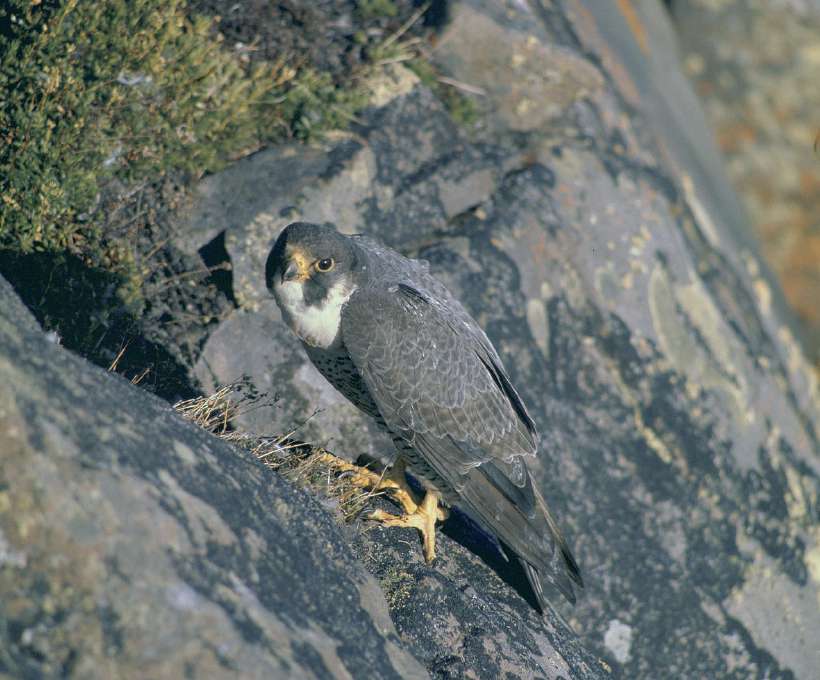Which is the fastest animal on earth?
Home / Science for Kids / 5Ws & H For Kids / Which is the fastest animal on earth?
Peregrine Falcon is the fastest animal on earth – it can fly nearly as fast as an airplane.
Peregrine Falcon is one of the rare birds that thrive in urban environments. It uses tall skyscrapers as launchpads and hunts pigeons and ducks. It is the world’s most widespread bird of prey and one of the most widely found bird species. It also has a good relationship with humans who use it for hunting.
Known as the Duck Hawk in North America, it is a falcon. It has a blue-grey back, barred white underparts, and a black colored head. The Duck Hawk is known for its speed. The fastest recorded speed it has reached is 389 km/h (242 m/h). It uses this speed while hunting, flying high above its prey and swooping down at a frightening pace.
Hunting at such a speed is no small feat and its vision has evolved to help it. Peregrine Falcons have the highest visual processing speed of any animal. Human beings, for example, can register about 24 images per second. Any faster than that and the human eye can not see the individual images but continuous motion, like a film. Incidentally, this is perhaps the reason why historically films were shot at 24 frames per second. The peregrine, however, can register up to 129 images in a second as individual images. This is how it keeps a precise eye on its prey even at 389 km/hr.

The Peregrine has evolved to deal with high speed. It has special nostrils that regulate airflow. Without these, at such a speed, the intake of air could hurt its lungs. It has three eyelids that clear away debris and protect its eyes from the air pressure. Once it spots its prey, it tucks its wings and tail and begins a rapid dive. It clips its prey, usually on the wing to protect itself against the shock of impact. This usually kills its prey, at which point the Peregrine continues its descent, turns in mid-air, and catches its prey with its legs. It is truly a sight to behold. If the prey is too big to carry, it will let it fall and eat it there.
During the 19th century, the Peregrine nearly became extinct. They were killed to protect messenger pigeons. The human pesticide DDT also prevented them from having chicks. After various conservation attempts, the number of Peregrine Falcons has revived. Since 1955 they have been a protected species and have received various honors. It is the national bird of the United Arab Emirates and the state bird of Chicago, USA.
444 words |
4 minutes
Readability:
Grade 7 (12-13 year old children)
Based on Flesch–Kincaid readability scores
Filed under: 5ws and h
Tags: #extinct, #falcon, #hunting, #speed
You may also be interested in these:
Pushed to the Edge
Man's Best Friend
Tale of the Woolly Mammoth
Boomerang: From Weapon to Fun
How did the Teddy Bear Get Its Name?